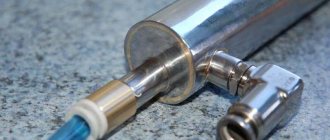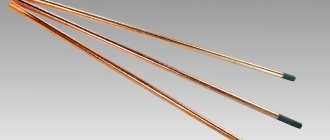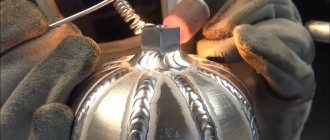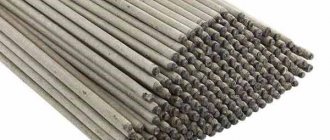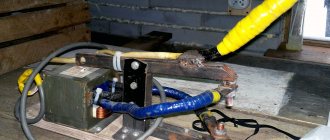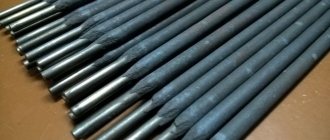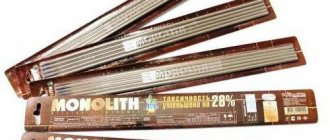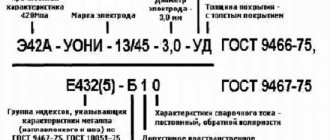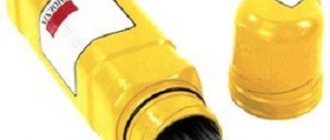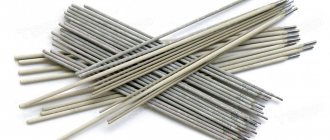Electrode material
The electrode material for resistance welding cannot be absolutely anything. Resistance welding itself involves high temperatures, compression, stress, uneven heating of the electrode, etc. Accordingly, the metal from which the electrodes will be made must have characteristics that will allow the product to withstand all loads. After all, the longer the shape of the electrode remains unchanged, the better the weld spots will be. As soon as the shape begins to change under the influence of loads, the quality of the connections will immediately begin to deteriorate.
What else can cause the electrode to deform? Constant overheating, melting or even oxidation - all this awaits the electrodes used in resistance welding. Therefore, it is important to choose the right material from which they will be made.
The main material is copper. But it is never used in its pure form because it is not heat-resistant. And this is important when resistance welding. Manufacturers take this feature into account and use various copper alloys, which contain, in addition to copper, various alloying components.
This can be chromium, aluminum, zinc, magnesium, cadmium, zirconium, beryllium and some other metals. Thanks to them, copper electrodes do not lose their high electrical conductivity, while acquiring improved performance characteristics. For comparison, exclusively copper electrodes deteriorate 6 times faster than electrodes made from a mixture of copper and any alloying component.
But this does not mean that when purchasing electrodes, you can simply choose products with the composition described above and forget about the difficulties. You also need to take into account the characteristics of the metal you will be welding. So, for example, if you work with galvanized steel, then you need to purchase electrodes with copper, tungsten and molybdenum in the composition. So the electrodes will be quite hard and resistant to the base metal. And they will not fall into disrepair.
Reasons for the fragility of resistance electric welding electrodes
The resistance welding process consists of the following stages:
- Preliminary preparation of the surface of the parts to be joined - it must not be easily cleaned of contaminants and oxides, but also very smooth in order to eliminate unevenness in the resulting electric field voltage.
- Manual or mechanical clamping of welded products - with increasing clamping force, the intensity of diffusion and the mechanical strength of the weld increase.
- Local melting of metals in the pressing zone by the heat of an electric current, resulting in the formation of a welding joint. Pressing the electrodes at this stage prevents the formation of welding spatter.
- Switching off the current and gradually cooling the weld.
Thus, the material of electrodes for contact welding undergoes not only significant thermal stresses, but also mechanical loads. Therefore, a number of requirements are placed on it - high electrical conductivity, high thermal resistance (including from constant temperature fluctuations), increased compressive strength, low heat capacity coefficient. A limited number of metals have this complex of properties. First of all, it is copper and alloys based on it, however, they do not always meet production requirements.
Due to the constant increase in the energy characteristics of welding tongs produced for spot welding, many brands direct consumers to use only “their” branded electrodes, which is not always observed. As a result, the quality of welds produced using this technology decreases, and confidence in the resistance electric welding process itself is undermined.
These problems can be overcome in two ways: by improving the types and designs of welding electrodes for spot welding, and by developing new materials used for the manufacture of such electrodes. For private users, the price of the issue is also important.
Electrode designs
Electrodes are also used to work with electric arc welding, but they are fundamentally different from the conductive elements for contact welding, and are not suitable for this type of work. Since at the time of welding the parts are compressed by the contact parts of the welding machine, electrodes for resistance welding are able to conduct electric current, withstand compression loads and remove heat.
The diameter of the electrodes determines how firmly and efficiently the parts will be welded. Their diameter should be 2 times thicker than the welded joint. According to state standards, they range in diameter from 10 to 40 mm.
The metal being welded determines the shape of the electrode used. These elements, which have a flat working surface, are used for welding conventional steels. The spherical shape is ideal for joining copper, aluminum, high carbon and alloy steels.
The spherical shape is most resistant to combustion. Due to their shape, they are able to make a larger number of welds before sharpening. In addition, the use of this form allows you to weld any metal. At the same time, if you weld aluminum or magnesium with a flat surface, dents will form.
Electrode diagram for welding
The electrode seat is often cone-shaped or threaded. This design avoids current losses and effectively compresses parts. The landing cone can be short, but they are used with low forces and low currents. If a threaded fastener is used, it is often through a union nut. Threaded fastening is especially important in special multi-point machines, since the same gap between the claws is required.
To perform welding deep into the part, electrodes of a curved configuration are used. There is a variety of curved shapes, so if you are constantly working in such conditions, it is necessary to have a selection of different shapes. However, they are inconvenient to use, and they have lower durability compared to straight ones, so they are used last.
Since the pressure on the shaped electrode is not along its axis, it is subject to bending during heating, and this must be kept in mind when choosing its shape. In addition, at such moments, it is possible that the working surface of the curved electrode may shift in relation to the flat one. Therefore, in such situations, a spherical working surface is usually used. Non-axial load also affects the seat of the electrode holder. Therefore, if there is excessive load, you need to use electrodes with an increased cone diameter.
When welding deep into a part, you can use a straight electrode if you tilt it vertically. However, the angle of inclination should be no more than 30°, since with a greater degree of inclination, deformation of the electrode holder occurs. In such situations, two curved conductive elements are used.
Appearance of electrodes
Using a clamp at the point where the shaped electrode is attached allows you to reduce the load on the cone and extend the service life of the welding machine seat. When developing a shaped electrode, you must first make a drawing, then make a test model from plasticine or wood, and only then begin its manufacture.
In industrial welding, cooling of the contact part is used. Often this cooling occurs through an internal channel, but if the electrode is of small diameter or increased heating occurs, then the coolant is supplied externally. However, external cooling is allowed provided that the parts being welded are not susceptible to corrosion.
The most difficult thing to cool is the shaped electrode due to its design. To cool it, thin copper tubes are used, which are located on the side parts. However, even under these conditions, it does not cool well enough, so it cannot cook at the same pace as a straight electrode. Otherwise, it overheats and its service life is reduced.
Welding in the depths of a small part is carried out with shaped electrodes, and with large parts it is preferable to use shaped holders. The advantage of this method is the ability to adjust the length of the electrode.
During resistance welding, the axis of the two electrodes should be 90° relative to the surface of the part. Therefore, when large-sized parts with a slope are welded, rotary, self-aligning holders are used, and welding is performed with a spherical working surface.
Steel mesh with a diameter of up to 5 mm is welded with a plate electrode. Uniform load distribution is achieved by free rotation of the upper conductive contact around its axis.
Although the spherical shape of the working surface is the most stable of the other shapes, it still loses its original shape due to thermal and power loads. If the working surface of the contact increases by 20% of the original size, then it is considered unusable and must be sharpened. Sharpening of resistance welding electrodes is carried out in accordance with GOST 14111.
Classification of electrodes for manual arc welding
When considering different types of electrodes for manual arc welding, attention should be paid to the fact that various coatings can stabilize the resulting arc during combustion. All types of rod coating have their own characteristics, which should be taken into account when considering the types of electrodes for manual arc welding
The same brands can be produced by different manufacturers. It is worth considering that the quality of consumables may vary significantly.
The purpose of the electrodes can be very different. Based on this criterion, the following classification of manual arc welding electrodes is carried out:
- Alloyed metals have become quite widespread, since the addition of various chemicals significantly improves their performance characteristics. Some chemicals can significantly increase the heat resistance of a metal. For such alloys, electrodes are used, which are marked with the letter “T”.
- For welding steels that have a low concentration of impurities, design options are used, which are marked with the letter “U”. In addition, such electrodes for manual arc welding are suitable for metal compounds with an average carbon concentration. The achieved tensile strength value is 600 MPa.
- Structural steels have also become very widespread. They also contain alloying elements. The tensile strength in this case is 600 MPa.
- In some cases, metal may be soldered onto the surface. Metal can have exceptional performance qualities. For this case, a design option is suitable, which is designated by the letter “N”.
- There are electrodes on sale designed for steels with a high concentration of alloying elements.
- A separate group includes steels that have high ductility properties. It is quite difficult to work with such a material, so they began to produce electrodes for aluminum or other similar alloys. The marking indicates the letter “A”.
Types of electrodes for welding
The diameters of electrodes for manual arc welding can differ significantly, which is due to the characteristics of the work being performed. Classification is also carried out according to the thickness of the coating being created. The following types of electrodes are distinguished:
- With a thin coating. When designating, the letter “M” is used. As a rule, in this case the surface layer is about 20% (the indicator is taken from the total diameter).
- With medium coating thickness. When designating, the letter “C” is indicated. In this case, a layer is applied whose thickness is 45% of the diameter of the rod used during manufacture.
- The thick coating is 80% of the diameter and is marked with the letter “D”.
- There are also particularly thick versions, which are designated by the letter “G”. In this case the thickness is more than 80%.
Do not forget that electrodes may have restrictions on their use and position during work. An example is that some substances have increased fluidity, and it will be difficult to carry out work near the ceiling surface. In order to quickly determine the purpose of the electrodes for manual arc welding, a certain marking scheme is used:
- 1 – design options that can be used in almost any position. This is due to the fact that the coating used retains its shape and is not too fluid.
- 2 – can be used in almost all positions, with the exception of work with a vertical position of the tool used.
- 3 – these electrodes are designed for horizontal and vertical use, ceiling position is excluded
- 4 – electrodes for manual arc welding, which can only be used in a horizontal position.
Different brands of electrodes for welding
It is worth considering that different countries have different labeling standards. On sale there are electrodes for manual arc welding from domestic and foreign manufacturers, the classification of which may differ significantly.
Electrodes for spot welding.
One of the factors affecting spot welding performance is the durability of the electrodes. The less the electrode wears out, the less often you will have to refill it, and the less time the machine will be idle. In order for an electrode to be resistant, the material from which it is made must have high hardness, thermal conductivity and low resistance.
Manufacturing of electrodes
Typically, electrodes are made of M1 copper - technical copper with the least amount of impurities that reduce thermal and electrical conductivity. However, copper electrodes wear out relatively quickly, since copper has low hardness. The hardness of copper can be increased by drawing or forging the electrode in a cold state, but this hardness is quickly lost when the electrode is heated during welding. Therefore, the electrode requires a material whose hardness loss would occur at a temperature higher than that to which the electrode is heated during welding. There are copper alloys with increased resistance (Table 9) for
electrodes of contact machines.
To give these alloys the necessary physical properties, they must be processed.
Electrode shapes:
Electrodes can be of various shapes. The shape of the electrodes is selected in relation to the configuration of the joint being welded, in Fig. 4 shows commonly used forms of electrodes. Its durability depends on the design of the electrode.
Electrodes with a spherical surface of the working part have the greatest durability.
Electrodes with a conical bottom have lower durability, but their durability increases
Rice. 5. Cold-stamped electrodes: i—the sequence of changing the shape of electrode blanks during stamping; b—electrode with a ribbed surface, increasing the cone angle.
- The durability of the electrode will increase if, with a conical electrode, the edges of the cone are rounded.
- To reduce deep dents, it is recommended to use electrodes with a spherical working part.
- To save copper and copper alloys, electrodes are produced by cold heading instead of machining. Electrodes of this type are shown in Fig. 5.
Recommendations for choosing welding electrodes
The selection of electrodes begins with determining the desired diameter. Then the type is determined: melting or non-melting, the type of coating, the required type and polarity of the current, and the location of the seam. The grade of steel being welded and the shape of the edge also matter.
The diameter of the rod will depend on the thickness of the surfaces being welded. In domestic conditions, the running size is 3 mm; for thin sheets, rods Ø2 mm are used. In industrial conditions they use four, and Ø5 mm is in demand for special conditions in construction and bridge building.
Carbon steels are welded with rutile-coated consumables; for stainless steel and aluminum, tungsten ones are used. Examples of such electrodes: MR and ANO.
For manual electric arc welding using an inverter, electrodes with a basic or rutile coating are suitable. Popular electrodes with basic coating are SSSI. They provide a high-quality, durable seam that is not prone to cracking. Used for critical connections with harsh operating conditions.
Selecting an electrode depending on the thickness of the metal
The diameter of the welding electrode directly depends on the thickness of the sheets being welded. An incorrect choice of diameter leads to a decrease in arc durability and poor welding - the seams are thick.
| Rod diameter, mm | 2,5 | 2,5-3 | 3-4 | 4-5 | 5 |
| Sheet thickness, mm | 2 | 3 | 4-5 | 6-12 | 13 |
Butt joints on sheets up to 4 mm thick do not require edge cutting. On thicker metal, chamfers are made on the edges, the seam is applied in several passes, first using electrodes with a thickness of 2–3 mm, and then 4–5 mm.
Choice depending on the type of metal
The choice of electrode depends on the type of metal being welded. Accordingly, electrodes are available for various steels, stainless steel, cast iron and non-ferrous metals.
What consumables are best for welding steel:
- low-carbon, slightly deoxidized and boiling steels can be welded with electrodes with any type of coating;
- semi-quiet ones are cooked with rods coated with basic or rutile coating;
- for products made of mild steel that will experience dynamic loads and exposure to negative temperatures, rods with a basic coating are chosen.
Popular grades for steel are UONI, MR, OZS and ANO. They are characterized by low spatter, good slag separation and no overheating. For low-carbon steels, ANO-4 and ANO-6 are used; for low-alloy steels, UONI-13/45 and UONI-13/55, as well as ANO-4 and ANO-6 are suitable. Alloy steels are welded with TML-1U, TML-3U and TML-5 electrodes. OZL-6 and TsL-11 work with stainless and high-alloy steels.
Figure 11 — Types of electrodes and their application for steels
For aluminum and its alloys, OZA-1, OZANA-1, OZA-2 electrodes are used. For copper parts, consumables Komsomolets-100, ANTs/OZM series 2,3,4 are used. Nickel is welded using the OZL-32 grade. For welding cast iron, OZCH-2 is used.
Electrodes for spot welding
The spot welding process explains itself from its name. Accordingly, a mini welding seam is one point, the size of which is determined by the diameter of the working surface of the electrode.
Electrodes for resistance spot welding are rods made of alloys based on copper. The diameter of the working surface is determined by GOST 14111-90, and is manufactured in the range from 10-40 mm. Electrodes for spot welding are carefully selected because they have different properties. They are made with both spherical and flat working surfaces.
Curved electrode for spot welding
Electrodes for spot welding with your own hands can theoretically be made, but you need to be sure that the alloy meets the stated requirements. In addition, you need to maintain all sizes, which is not so easy at home. Therefore, when purchasing factory-made conductive elements, you can count on high-quality welding work.
Spot welding has a lot of advantages, including an aesthetic weld spot, ease of operation of the welding machine and high productivity. There is also one drawback, namely the lack of a sealed weld seam.
Rod material
Electrode rods for welding copper and its alloys are made from wire and rods, the composition of which meets the requirements set out in GOST 16130-90. Mostly it is copper or bronze. Metal alloys are often used in production.
- Copper rods are made with a diameter of 2-6 mm, they can be wrapped in tin 0.3-.05 mm thick. They are coated with various types of coating, for example, basic or rutile. For the Komsomolets-100 electrode, the rod is made of M1 copper.
- Bronze rods are made mainly from metal grade BrKMts-3-1. They are coated with a mixture of different substances. They can also be made from tin-phosphor bronze Br.FO 4-03.
- Bronze rods ensure the creation of excellent quality seams. They deoxidize metal worse than those made of copper. Bronze rods may reduce the mechanical strength of the joint under certain conditions.
Material for production
The resistance welding process itself involves high temperatures, stress, compression, and uneven heating of the electrode. Therefore, the material for such models should not be any.
They must be made of metal, the characteristics of which allow them to withstand all loads. Only if the shape of the product remains unchanged will the welding work be of high quality.
If the configuration begins to change due to high loads, the quality of the connection will immediately deteriorate.
What influences will lead to a change in the electrode configuration? During resistance welding, the electrode melts, oxidizes, and constantly overheats.
Therefore, the issue of choosing a composition for the production of an electrode is one of the most important in carrying out work at the required level.
